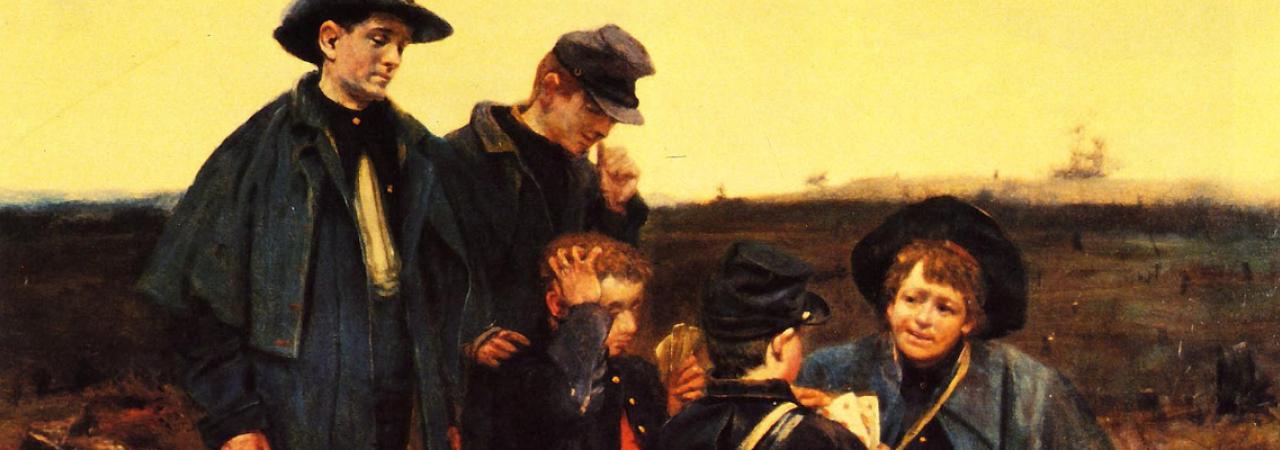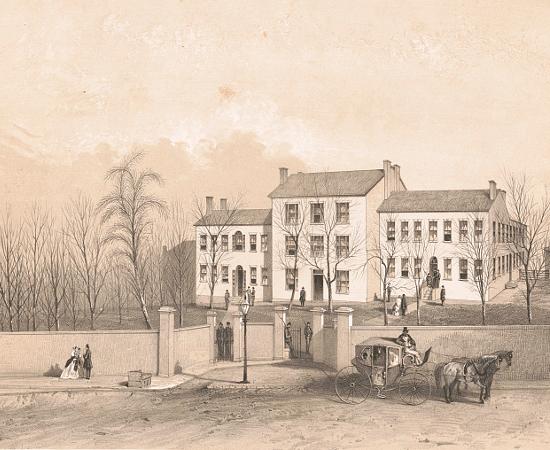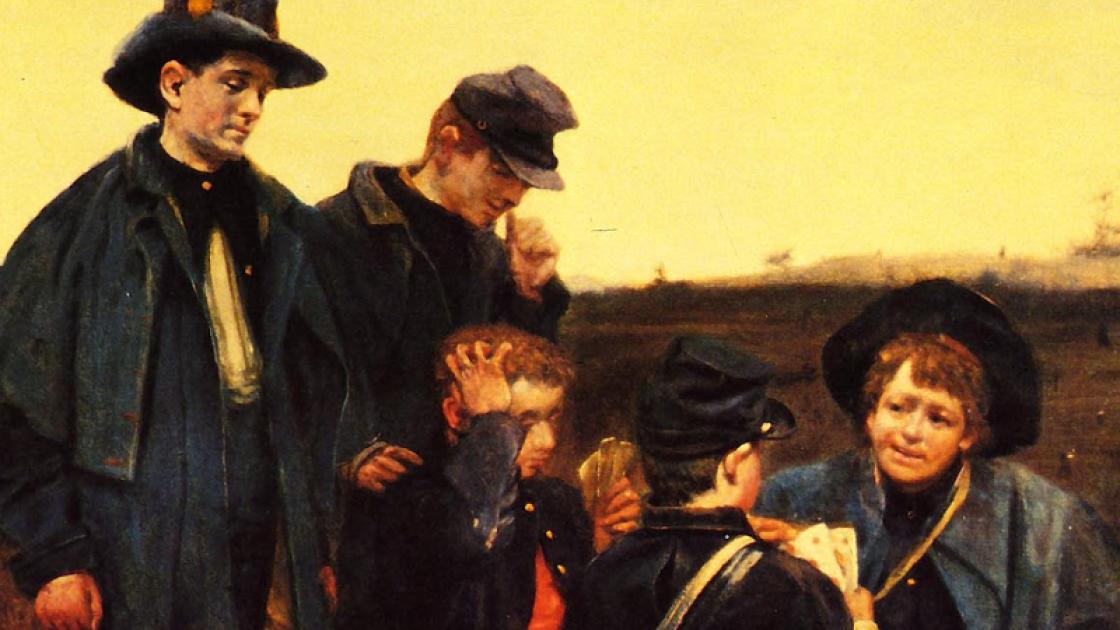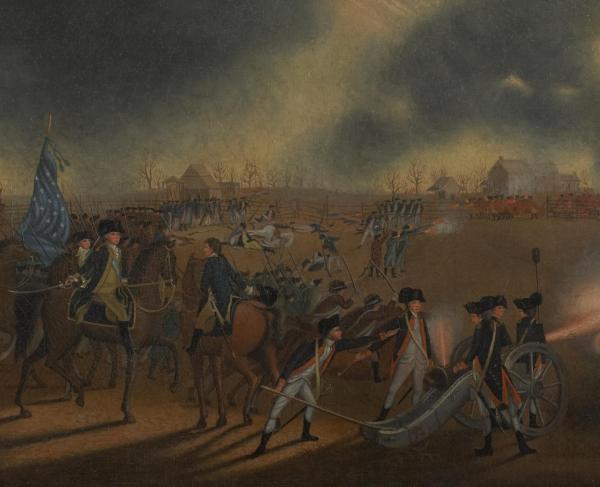
School was an important topic in the lives of most children. Few states provided universal public education, but in communities throughout the nation, local church congregations and civic-minded citizens started schools. The teacher was often left largely to his or her own devices and the

day-to-day running of the schools was based more on the teacher’s practices than the board’s policies. The agricultural economy in both the North and the South dictated school schedules, and children were excused from school during the months when they were needed to work in the fields. The modern practice of closing schools for long summer breaks is a holdover from this practice.
The schools were generally small, and often several grade levels were taught in the same room. Testing was often oral, and children memorized and recited more often than they wrote. Indeed, there is some evidence that the phrase “toeing the line” relates to the practice of making children stand at a line on the floor when reciting their lessons
Corporal punishment was used, and even encouraged. Lucy Chase traveled south to teach in a school for free blacks. She related in a letter that the mothers frequently encouraged her to use corporal punishment:
Norfolk, Va. 7/1/64
...Many a father and mother have begged me to beat their children at school. “Spare the rod and spoil the child,” is on every mother‘s tongue. “Now you whip her and make a good girl out of her,” the kindest mother says when she trusts her sweetest child to us...
In general, students attended school for fewer years than do modern students. However, a brief survey of school books from the period indicates that their reading books advanced through several modern grade levels in any given year. By the fifth year of school, students were reading material at a level which is today considered college level.
There were also academies which provided intensive educational experiences for boys and girls aged thirteen to twenty. The children of wealthy families might board at the academy, while children from the area were day students. These academies offered a variety of classes. John B. Cary’s Hampton, Virginia Male and Female Academy, for example, offered classes in Greek, Latin, French, German, Italian, and Spanish, as well as chemistry, natural philosophy, and astronomy. As at most academies, the boys and girls were kept separated at Hampton.
At many Southern academies, discipline was maintained among the boys through a military-type training which well prepared them for military service. It not only prepared the students, but also the faculty. Indeed, John B. Cary’s academy closed during the war, as 20% of the faculty, and 25% of the students served together in a unit which became the 32nd Virginia Infantry. (The Civil War had a smaller impact on Northern academies.)

A family sending a child to an academy was paying tuition and, often, boarding fees. In addition the family was doing without any income that the child might have made at a part-time job. Thus students who boarded at and attended schools like Cary’s Hampton academy were the exception rather than the rule.
—Adapted from An Introduction to Civil War Civilians by Juanita Leisch (Thomas Publications, 1994)


